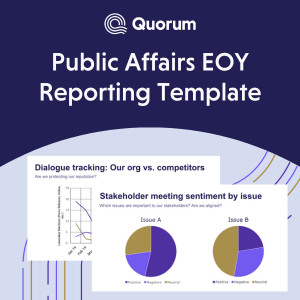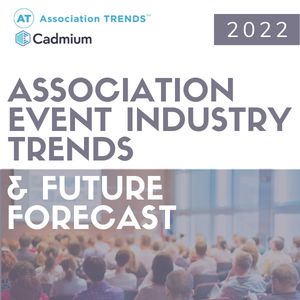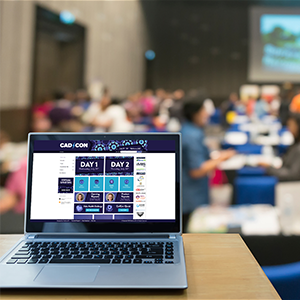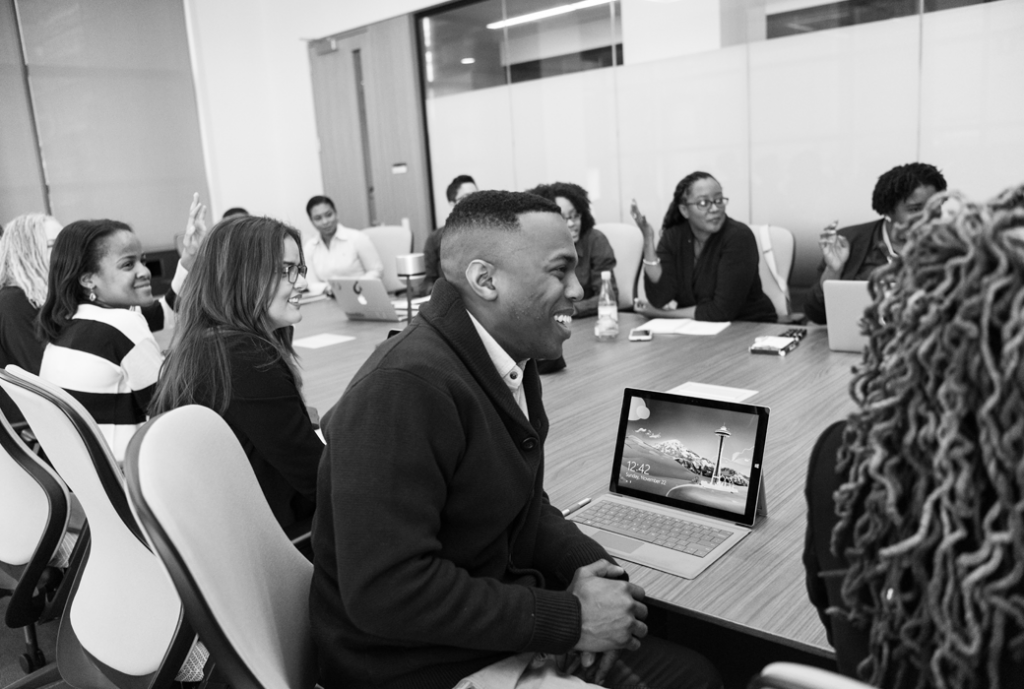
Thinking Out Loud: How to Make Conferences into Learning Experiences that Lead to Action
Nancy Bacon is the director of Learning & Education at Washington Nonprofits and this month’s Association TRENDS education guest writer. She leads the development and implementation of all the organizations learning and education programs at Washington Nonprofits as well as authors the blog Chunk Flip Guide Learn. Take a look at one of her articles where she dives into the always challenging task of turning what we learn at conferences into actionable implementation at our associations and organizations.
We put a lot into conferences. We spend months lining up speakers with ideas intended to shift our thinking. We curate workshops and plan networking time; we publish conference programs and name tags enough to fill a table. And we aren’t the only one with a lot on the line: participants commit registration fees, travel costs, and time out of the office.
How can we make conferences worth all of this time and effort? How can we place the conference in a larger constellation of learning that starts before the big day and runs well after the conference concludes?
These are the questions that led me to try some new ideas at our most recent conference in Yakima. In the spirit of “thinking out loud,” I share them here to expand the conversation.
1. CONFERENCE PLANNER
Reflection helps us in the long run, yet getting people to stop and think before a conference can be a challenge. This year I created a two page Conference Planner and sent it with a five-article reading list five days before the conference.

During the last session of the day, I sat down at a table at the back of the ballroom. Next to me was a woman with a fully completed conference planner in front of her. She had used it to navigate through the day. Later I got an email from a local nonprofit director: “I recall that you had sent out a really helpful worksheet to get the most out of the conference. Could you send it to me? I’ve got some staff gearing up for state and national conferences this summer, and I’d like them to be much more focused on what they hope to learn and bring back. Just spending a few minutes with your worksheet helped me get more out of the [conference last week].”I spent far too long sharpening 280 colored pencils to have enough for a complete rainbow on each table. While some people left the placemats untouched, many of them were filled by the end of the hour.
Music to my ears! We’ll now make conference planners a regular feature.
2. KEYNOTE PLACEMAT
Keeping people following along during a keynote address can be hard. It is too much paper—and too lecture-like—to make copies of the powerpoint itself. Still, you want to encourage reflection and note-taking that happens during pair-sharing and table conversations.
I worked with the talented Margaret (Meps) Schulte, a graphic designer with 3 Great Choices, to create a legal-sized Keynote Placemat.
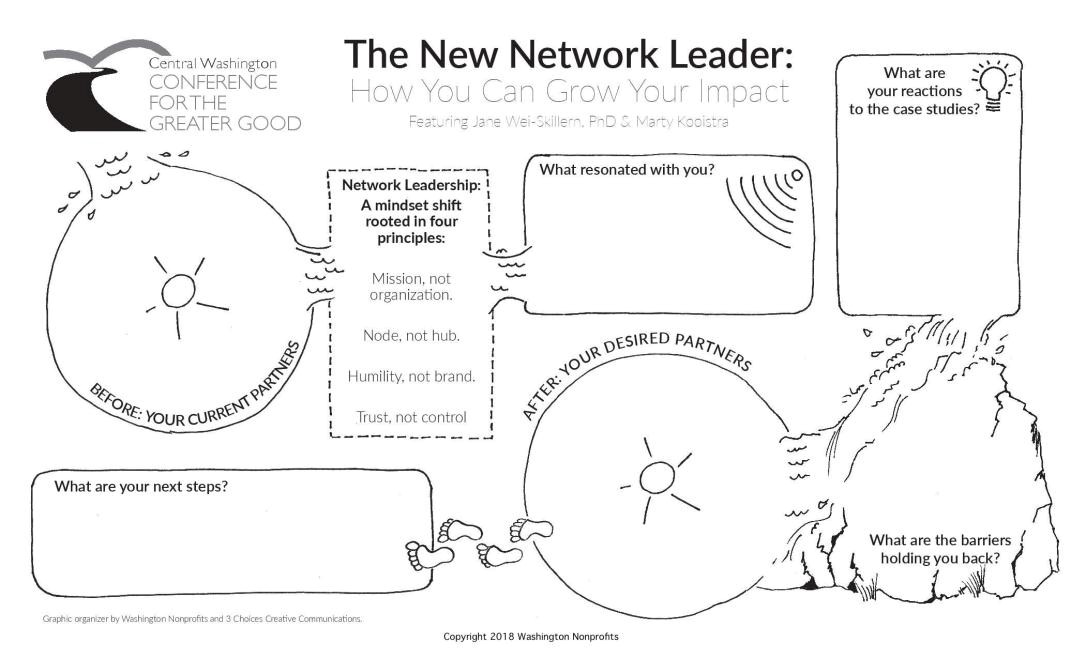
I spent far too long sharpening 280 colored pencils to have enough for a complete rainbow on each table. While some people left the placemats untouched, many of them were filled by the end of the hour.
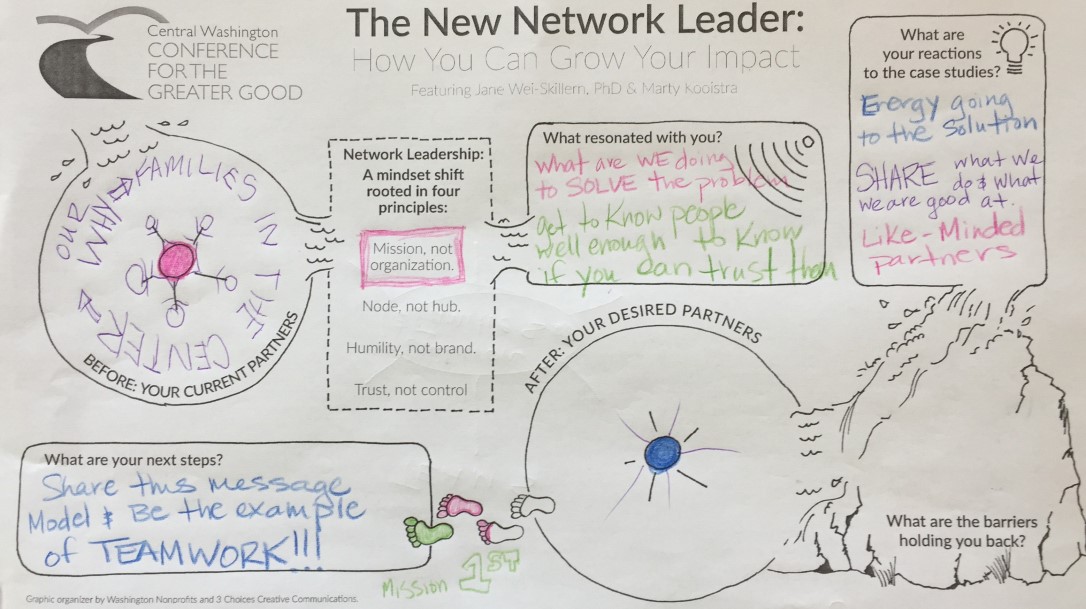
3. KEYNOTE FOLLOW-ON DISCUSSIONS
Most keynote speakers challenge us to think differently, and our two keynote speakers were no different. They introduced the concept of network leadership, which requires a new mindset within a community of people who see the value in changing collaborations. Change is going to take time and a team. How do we do support follow-on conversations with smaller cohorts of participants?
We are trying something new—one month later conversations in four Central Washington communities (and one conference call)—to build on the keynote address. A local person will facilitate these conversations; we have created a discussion guide to support them. It is hard to say how many people will turn out for this. There’s only one way to find out!
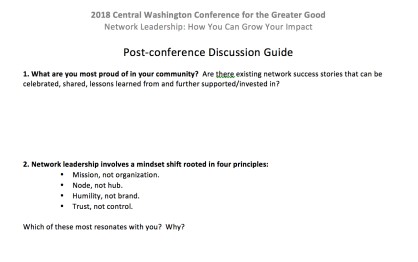
Nothing replaces conference energy: so many people coming together into one space! That energy can propel a community forward when participants have opportunities to reflect, connect, and plan together. I’m curious to see how these activities make a difference. Hopefully, I’ll have something to report back.
Put Nancy’s tips to good use! Join Association TRENDS at this year’s Learnapalooza. Learnapalooza is a three-day conference in Washington, DC, designed specifically for association and nonprofit education and training staff. The summit will be comprised of 11 expert-led hour-long sessions related to all aspects of member-focused education programs. Don’t wait and register today!
